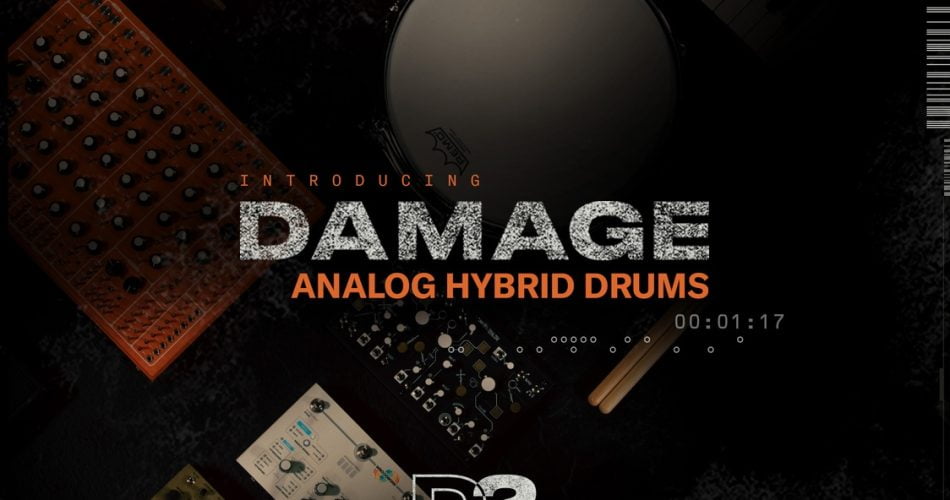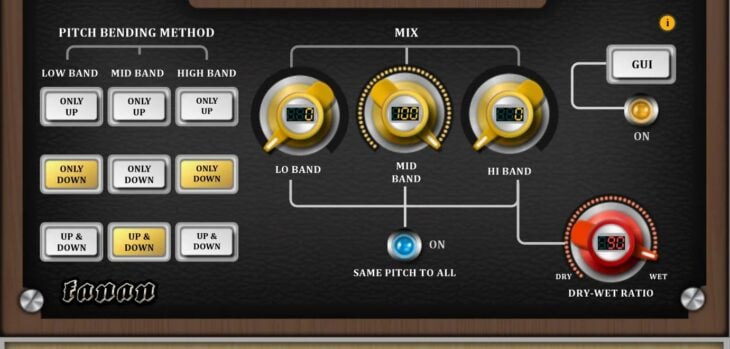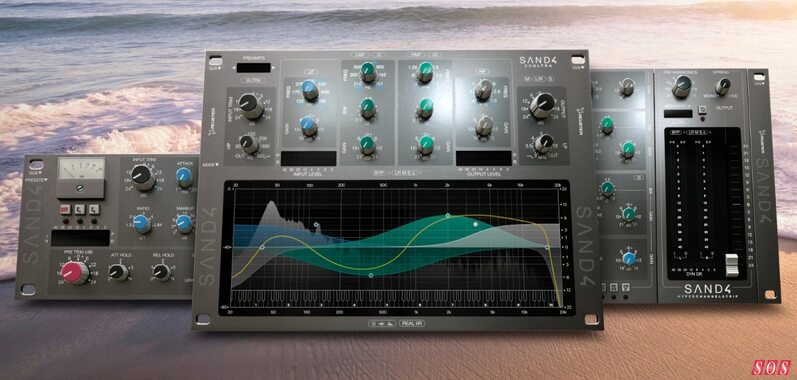16 Tips on How to Mix 808s for Powerful Low End
Mixing 808s is a crucial skill in modern music production, particularly in genres like hip hop, trap music, and modern electronic music. The low end of your track, dominated by 808s, can make or break your song’s impact. Here are 16 tips to help you mix 808s for a powerful and clear low end. …
The post 16 Tips on How to Mix 808s for Powerful Low End appeared first on Beat Production.
2B Played Music has released a free update to the 2B Reverbed reverb effect plugin for Windows and Mac. Version 2.1 includes an improved reverb... The post 2B Played Music updates 2B Reverbed effect plugin to v2.1 appeared first on rekkerd.org.
https://beatproduction.net/
Mixing 808s is a crucial skill in modern music production, particularly in genres like hip hop, trap music, and modern electronic music. The low end of your track, dominated by 808s, can make or break your song’s impact. Here are 16 tips to help you mix 808s for a powerful and clear low end.
1. Understand the Frequency Spectrum
Start by understanding the frequency range. 808s typically occupy the sub frequencies and low frequencies. It’s crucial to have a clear understanding of sonic properties of your 808s and how they interact with the rest of your mix, especially the bass line and kick drum.
Because of the physics of sound you can only have so much intelligible sound in any frequency, especially on smaller speakers. So if you’ve got a sub kick and a sub bass booming at 50 Hz, it just won’t work. Instead, it’s a good idea to think ahead about how you want to stack the individual elements of your low end. You’ll need to decide whether you want the bass sound or the kick drum sound to have a lower fundamental frequency and choose your samples and processing accordingly. There’s no right answer! Lots of bangers have sub kick and a more low-mid 808. Lots of bangers have a sub-heavy 808 bass and a thinner, clicker kick. Just make sure that you’re being mindful. You can then use a high-pass filter on the higher instrument of the two to remove the uneeded lows.
2. Choose the Right Sounds: Sample Selection
Sample selection is one of the most important things in sound design. Different drum samples, especially long-tailed kick drums and sub kicks, can impact your mix in different ways. Choose samples that align with the desired sound of your track. No matter the producer, from Rick Ross to Kanye West, the samples will define the signature sound of their tracks. Better samples really do make for better beats.
If you’re struggling to find the right sample, you’re in luck.
We set out to create one of the best sounding, best value 808 sample packs around, the Ultimate 808 Drum Pack.
The Ultimate 808 Drum Pack contains a massive variety of samples from the classic 808 drum. This drum kit is highly suitable for trap and hip-hop beats, but is equally useful for pop music, drum n’ bass & dubstep producers.
1st > You have the drum machine sounds.
You can’t get any more classic than the Roland TR-808. From the early days of hip hop with Rick Rubin productions for Run DMC, LL Cool J, etc, all the way to modern day trap music.
It’s hard to imagine a world without the 808! We’ve gone to the original source material and sampled an original TR-808 through a professional mastering chain with very transparent settings, so the sounds are not heavily colored. Get the character of this classic machine in a convenient sample pack.
2nd > You get the bass sounds, the thing nowadays defines the term ‘808’!
Over the last years we’ve released a few products with 808 bass sounds. With the Ultimate 808 Drum Pack you get them all bundled up in one convenient package.
That means you get Low End 808 Pack and the 808 Besties as well as many 808s from our producer packages. Trust us, you’ll be set for a very long time with more than 160 unique 808s at your disposal!
The Ultimate 808 Drum Pack is available for instant download and is compatible with every sampler & software that can handle WAV audio files.
3. Use Multiband Compression Wisely
Multiband compression can help balance different elements of your 808s. It allows you to compress different frequency ranges independently, which is great for controlling low-end dynamics without affecting higher frequencies. For a better result with a multi-band compressor, I tend to use three bands: a sub band (below 100 Hz) with a fast attack and 4-5 dB of compression; a mid-band (from 100Hz-1000Hz) with 2-3 dB of compression and a medium attack and fast release; and a high band that I leave uncompressed. That way the sharp transient energy of the 808 can still be heard in the high frequencies on a phone, but the low end feels fat and full.
4. Tune Your 808s
Tuning your 808s to the key of your track is crucial. This ensures that your bass parts are in harmony with the rest of your music. Pay attention to key changes and the root note of your bass line for a coherent sound.
Also make sure your playing the correct notes!
Sometimes it can be really hard to hear how an 808 bass is playing with the other instruments. An easy way to fix this is to tune the 808s up an octave or two while you’re writing your basslines so you can clearly hear what’s going on. Then once you are sure they’re in the right key, tune them back down.
5. Sidechain Compression for Clarity
Sidechain compressor techniques are essential in mixing 808s. By using a sidechain compressor to duck the 808 when the kick drum sample hits, you can prevent phase issues and ensure both elements have their own space in the mix. Usually I like to use a fast attack and a fast release when doing side chain compression to just create a small gap in the bass line. Try starting with 6 dB of compression and see how that feels.
6. Address Phase Cancellation
Phase cancellation can weaken your low end. Ensure your 808s and kick drum are in phase. If you’re layering different notes or using parallel channels, check for phase issues by flipping the phase and listening for changes in the bass response.
7. High Pass Filtering for Control
Use a high pass filter to clean up unnecessary low-end rumble in other tracks. This leaves more room for your 808s and ensures they’re not competing with other instruments in the same frequency spectrum.
8. Add Harmonic Excitement with Tape Saturation
Tape saturation or a form of distortion can add harmonic excitement to your 808s, making them more perceptible on playback systems with less bass response. This can add a little bit of grit and character to your bass track. Like a lot of producers, I recommend using a multi-band saturator to preserve the fullness of low end while allowing for some sizzle up high. Here are some of the best distortion and tape saturation plugins.
9. Experiment with Transient Designers
Transient designers or transient shapers can sharpen the attack of your 808s, making them punchier. A transient shaper is particularly useful for getting that punchy kick sound in genres like trap music or modern hip hop. These are the best transient shaper VSTs out there.
10. Balance the Volume
Volume automation is key to managing the loudest points of your 808s. Ensure there’s enough headroom for all elements to coexist without crowding the mix. The goal is to achieve a consistent level for a better overall sound.
11. Consider the Role of Sub Frequencies
Sub frequencies are the bottom end of your bass elements. Ensure they are not clashing with the bass drum or the fundamental frequencies of other bass instruments. Sometimes, less is more in the sub-frequency range.
12. Create Space with Stereo Imaging
While 808s are typically centered, experimenting with stereo imaging on the higher frequencies can create space in your mix. This can be a great way to add dimension to your bass channel without causing phase problems.
13. Utilize Dynamic EQ for Flexibility
Dynamic EQ can be a great tool for managing the interaction between the 808s and other elements like the snare drum or vocal tracks. It allows for more precise control over specific frequency ranges dynamically.
14. Pay Attention to the Tail of Your 808s
The tail of your 808s – whether you’re using long-tailed or short-tailed drum samples – can significantly affect the groove and feel of your track. Adjust the release time on your compressors to control the length of the 808 tail for the right effect. Many samplers will also let you adjust the tail of kick sample or 808 sample.
15. Be Mindful of Genre-Specific Needs
The genre of music you’re working in can dictate how you approach mixing 808s. For instance, in pop music, you might want a cleaner, more defined low end, while in hip hop, a heavier, more pronounced bass might be desirable.
16. Keep Learning and Experimenting – and use a Soft Clipper
As a general rule, the best way to improve your 808 mixes is to keep learning and experimenting. Every track is different, and what works for one may not work for another. The good news is that with practice, you’ll get better and better!
And as a bonus tip, be sure to use a soft clipper on your 808s to get a little more volume out of them!
The post 16 Tips on How to Mix 808s for Powerful Low End appeared first on Beat Production.
This is a syndicated post. To read more, click the source link above.





